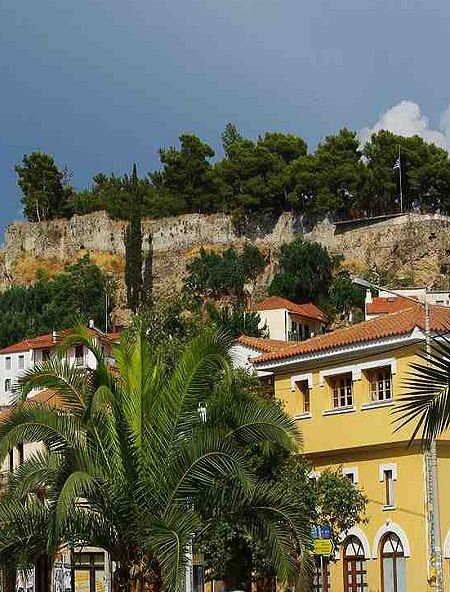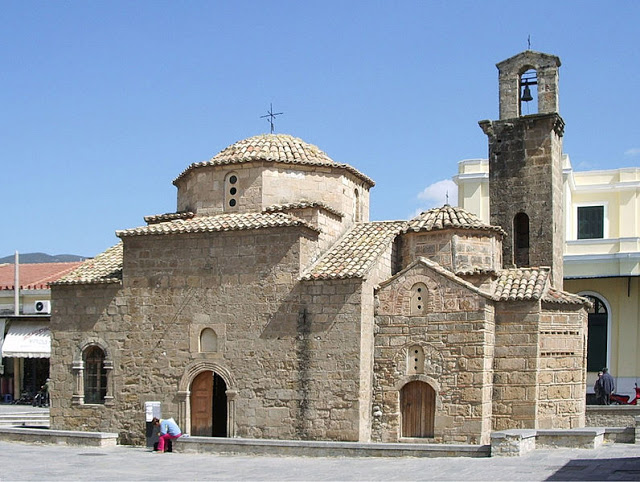Kalamata – Peloponnese – Greece

Kalamata Messinia, Peloponnese, Greece
Living in the Peloponnese, we’re never stuck for somewhere to go, we have ancient ruins on our doorstep and we’re no more than a few hours’ drive, from some of the most visited ancient and archaeological sites of Greece.
I’ve visited just about all the “Must see” places and towns of the Peloponnese and yet, incredibly, I had never been to Kalamata.
When my daughter, Nais, informed me she had business to attend to in Kalamata I enthusiastically said I would join her.

Vasileos Georgiou Square, Kalamata, Greece
Kalamata, capital of the Messinia region
Kalamata, capital of the Messinia region, is the second largest city of the Peloponnese, after Patra and lies at the foot of Mount Kalathi.
The city was first mentioned by Homer (epic poet, and author of “The Illiad and “Odyssey”) as Phara, an ancient city, built where Kalamata Castle stands today.

Castle of the Villehardouins in Kalamata
The Phara, mentioned by Homer, was of no importance, rather a one horse town and Kalamata wasn’t mentioned again until the tenth century, when, after the fourth crusade, in 1205, it was conquered by the Franks and remained under Frankish rule.
From 1481 to 1685, Kalamata and the rest of Greece, was occupied by the Ottomans.
In 1659, during the war between the Ottomans and the Venetians, the Venetians took Kalamata and the Venetian Republic ruled Kalamata from 1685 as part of the “Kingdom of the Morea“.

Looking out over Morea, Kalamata, Messinia, Peloponnese, Greece
Under the Venetians, Kalamata, was fortified, developed and thrived economically.
In 1821, Kalamata, was the first city in Greece to be liberated from the Ottomans in the Greek War of Independence, and taken over by the Greeks, under the command of generals Theodoros Kolokotronis, Petros Mavromichalis and Papaflessas, however, in 1825, the invading Ibrahim Pasha, destroyed the city.

Petros Mavromichalis raises Messinia in revolt, by Peter von Hess.
Ibrahim Pasha
After the invasion of Ibrahim Pasha, Kalamata was rebuilt and became one of the most important ports in the Mediterranean.
The second-oldest Chamber of Commerce,in the Mediterranean, after that of Marseille,
exists in Kalamata.

The port of Kalamata today
After WWII, Kalamata was more or less neglected, as was most of the Peloponnese, the emphasis being given to the development of Northern Greece.
This resulted in the decline, of the once rich port; there was no development whatsoever, during the 1970s and 1980s.
After a severe earthquake destroyed Kalamata in 1986, local authorities took a no-holds-barred stance, rebuilding and doing all they could to bring the forsaken city of Kalamata, capitol of Messinia, back to its former glory.

Kalamata. Messinia, Peloponnese, Greece
There’s plenty to do and see in Kalamata, the views from the Castle of the Villehardouins (Mentioned above) are breath-taking.

View of Kalamata
.jpg)
Kalamata Marina, Messinia, Peloponnese, Greece

The Church of the Holy Apostles, is where Mavromichalis declared the revolt against Ottoman rule in 1821.

The Church of Ypapanti. Kalamata. Greece
At the Kalograion Monastery of Saints Constantine and Helen, nuns weave the famous, hand-printed, silk, Kalamata scarves, from silk, produced from silk worms raised there.

Kalograion Monestary Kalamata

Silk workshop at the Kalograion Monastery, Kalamata

The famous, hand-printed Kalamata silk scarves
Kalamata boasts a one-of-a-kind railway museum.
Train engines and carriages are exhibited outdoors, among the lush, green, Kalamata scenery.
Railway Park. Kalamata
Rain stops play
The day for our Kalamata trip, didn’t dawn well, the wind was howling and the rain was pouring.
It was the kind of day to spend indoors, reading a good book, or, generally just pottering around.
My daughter, Nais, had an appointment in Kalamata at ten in the morning, so, at eight thirty, we were on the road
The weather was becoming progressively worse, at one point I thought we would have to stop, we could hardly see through the rain.
On a wet road to Kalamata Messinia, Peloponnese, Greece.
Despite the filthy weather conditions, we arrived safely in Kalamata and dashed from the car, to the nearest coffee shop, the rain was torrential, an umbrella was of no use at all and would have been whipped away in seconds by the gale force wind.
My plan yesterday had been to walk around Kalamata, snap a few pictures and visit the interesting sites and landmarks and of course, stock up on the famous Kalamata olives, said by some, to be the best in Greece.
Kalamata olives have been awarded the status of PDO (Protected designation of origin, a European Union law passed in 1992 to protect the names of regional foods.)
If grown elsewhere, this variety of olive is called Kalamon.

Kalamata Olives
The roads and pavements were awash with rain water, it was thundering and lightning, it was impossible to go anywhere.

A wet and windy Kalamata Messinia,Peloponnese, Greece.
I suggested that, after Nais had seen to her business, we return to the square where we had coffee, find a good restaurant, have lunch and do a bit of people watching.
We couldn’t let the day be a complete wash out!
An amazing cake shop saved the day; “Sweet” Kalamata; so much to choose from, of course, being a lover of anything lemon, I took the lemon cheese cake!

“Sweet” Kalamata
Do you know; I’ve since been back to Kalamata, twice, both times, again, it poured with rain?
My three visits to Kalamata, were all in the winter months; apparently, Kalamata is known for its wet winters!
I will get to see Kalamata in all her glory, my next trip, will be in the height of summer!
Related Post:
Travels around the Peloponnese – This is Sparta!



